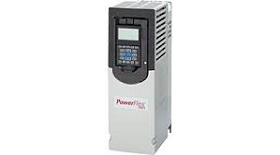The control modes
The output voltage of low-voltage general frequency conversion is 380 ~ 650V, the output power is 0.75 ~ 400kW, and the working frequency is 0 ~ 400Hz. Its control has gone through the following four generations.
The first generation-the control mode of sinusoidal pulse width modulation (SPWM) of 1U/f=C.
Its features are simple control circuit structure, low cost, and mechanical characteristics of hardness is also good, which can meet the general transmission of smooth speed regulation requirements and have been widely used in various fields in the industry. However, when the control mode is at low frequency, the torque is significantly affected by the stator resistance pressure drop due to the low output voltage, so that the maximum output torque is reduced. In addition, there is no direct current motor, and the static and dynamic torque capacity speed control performance is not satisfactory, and the system performance is not high, the control curve changes over load, torque response is slow, motor torque utilization rate is not high, low speed with the stator resistance and the existence of the inverter dead time effect and performance degradation, poor stability. Therefore, vector control is also developed for frequency control.
The second generation-voltage space vector (SVPWM) control mode.
On the premise of the integral generation effect of three-phase waveform, the three-phase modulation waveform is generated at one time for the purpose of approaching the ideal circular rotating magnetic field track of the air gap of the motor. It is improved after practical use. Frequency compensation is introduced to eliminate the error of speed control. The effect of stator resistance at low speed is eliminated by feedback estimation of flux amplitude. The output voltage and current are closed to improve the dynamic accuracy and stability. However, there are many control circuits and torque adjustment is not introduced, so the system performance has not been improved fundamentally.



